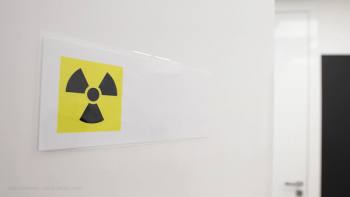
2025 Prescription Drug Expenditure Projections for Health System Leaders
Eric Tichy, Pharm.D., M.B.A., vice chair of pharmacy formulary at the Mayo Clinic Health System, explains potential pharmaceutical spending trends to inform the budgets of health system leaders.
The overall prescription drug spending in the United States in 2025 is predicted to rise between 9% and 11% higher than 2024 spending, which totaled $806 billion, according to a recently published paper on national trends in prescription drug expenditures and projections for 2025 in the American Journal of Health-System Pharmacy.
Drug spending at clinics in 2025, the paper predicts, will likely be higher than spending at hospitals, with an 11.0% to 13.0% increase. Lead author Eric Tichy, Pharm.D., M.B.A., vice chair of pharmacy formulary at Mayo Clinic Health System, explained there has been an effort to move more care into the outpatient setting. Additionally, innovation is allowing more drugs to be approved that can be administered in the ambulatory setting.
Tichy sat down with Managed Healthcare Executive to discuss the trends that are impacting health system pharmacy.
This has been edited for length and clarity.
Why is the predicted growth of overall drug expenditures at nonfederal hospitals so low (2% to 4%) compared with growth in the clinic sector (11% to 13%)?
Tichy: The main reason for that is most of the drug innovation is occurring in the outpatient arenas. If you think about most of the new therapies that are coming out, they're targeted in the ambulatory space. Almost all the oncology therapeutics are given in the outpatient setting. That is the number one drug category in terms of expenditures and other innovations. Anti-inflammatory conditions, neurological—all of it is in the outpatient space, and some of that is by design, because care in the acute care hospital is more expensive in general. There's been a big multi-decade push to move more care into the outpatient setting and potentially into the home, where you have less overhead and less cost for the healthcare system.
The wild card out there is public policy, things ranging from tariffs to executive orders around drug pricing.
We don't expect to see much impact in 2025 either way. I think a lot of these things are going to be more of a long-term factor. Even the Inflation Reduction Act, which was passed several years ago, we don't expect to start seeing a big impact from that until 2026, when the pricing with that goes into effect.
MHE: Why is it important that health system leaders understand drug expenditure patterns and anticipate future growth in spending?
Tichy: For healthcare organizations and for the functioning of the financial aspects of the organization, it's important to be able to understand what your cash outflows need to be. Finance leaders want to have good projections of what your expenditures are going to be. They don't want you to be too high or too low, because it can affect their forecasting, which can have downstream effects on even things like bond ratings and the ability to pay bills. That's why it's important to coordinate with those team members to make sure everyone's on the same page, and that's one of the reasons why we do the research every year.
Which drugs are driving the market in 2025? How does this compare with 2024?
Tichy: In 2025 we observed a continued trend from 2024 where the GLP-1 products are driving expenditures in all categories, especially the overall spend. The growth of those products has been double-digit percentages, and they are the main reason why we're seeing double-digit growth in expenditures for pharmaceuticals.
MHE: What is the potential impact of the Trump administration’s threat to impose tariffs on pharmaceutical imports?
Tichy: The tariffs are intended to be disruptive of the status quo in terms of trade. They would raise the price of medications, mostly generic drugs. There are a lot of generic drugs that come from India and active drug ingredients that come from China, so you're increasing the cost of those inputs. Generic drugs only make up about 10% to 12% of our drug expenditures. Even if they went up 10% or 20%, they’re still one-tenth of our drug expenditures.
If the tariffs go into effect, we do expect that you'd see some increased production of those things in the United States. It does take time to shift supply chains, and even if there is a capacity in the United States to make more drugs, it would take time to build new facilities and get new approvals.
Generic drugs are still a lot cheaper than branded drugs because there’s still a big incentive for payers to make it convenient to receive generic drugs. Generic copays are typically $5, and they've been $5 for 30 years, so I think you'll continue to see that.
One of the executive orders was targeted at improving the speed of getting drug approvals, especially generic drugs. My thought is that it’s one of the reasons why the pharmaceutical tariffs have been delayed relative to some of the other tariffs. The concern is that if it's done too rapidly, the supply chains will not have time to adjust, and then you can end up with shortages of certain drugs that are exclusively sourced from overseas locations or that have ingredients that come from overseas. Those shortages could then push you to use more expensive alternative branded medications, which could drive up costs as well.
The most concerning thing is that if we had shortages of essential things, it could disrupt the ability to treat patients most appropriately. So, it's been a relief that the pharmaceutical tariffs have been delayed, and we'll see how this eventually plays out.
MHE: Do you have a prediction about which generic drugs would be impacted by the shortage?
Tichy: Antibiotics and chemotherapeutic agents are disproportionately manufactured overseas because there are extra environmental and worker protections that exist in the United States. It's financially advantageous to make those products in places where they don't have such strict regulations.
Because of that, there's been this long-term trend of antibiotics and chemotherapeutic agents being made overseas. We have seen shortages in recent years with those products, and a lot of times it's been because the FDA goes overseas, does an inspection of a plant and shuts down that manufacturer that was a very large percentage of the overall market share. The market can't meet the demand, and then we end up with a shortage.
Newsletter
Get the latest industry news, event updates, and more from Managed healthcare Executive.




















































